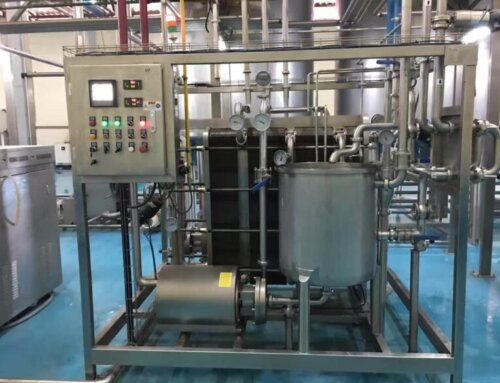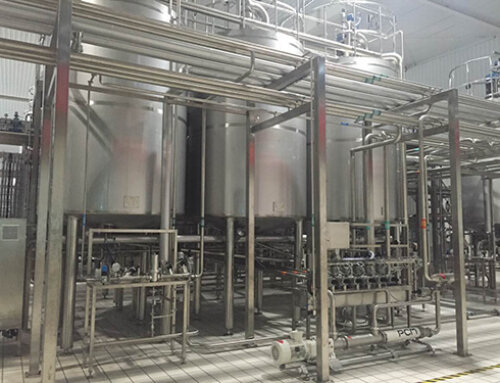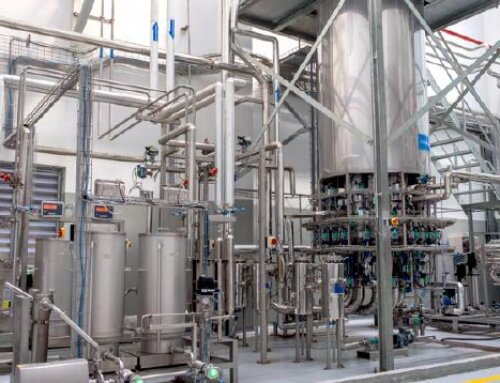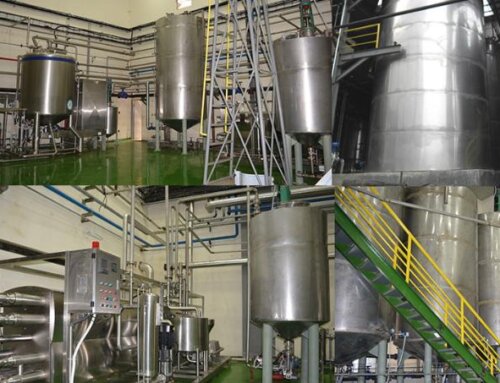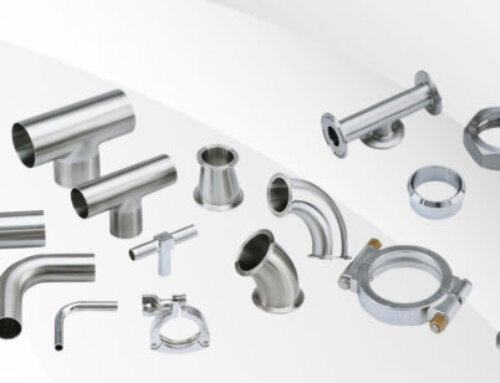Beverage Preparation System Description
The beverage is mainly composed of water, sugar, juice concentrates or plant extracts, flavorings, colloids, preservatives, emulsifiers and other ingredients. So in the beverage processing plant, the ingredients dissolving and blending system is the core process to formulate the end products’ quality and flavor. No matter you are producing fruit juice, tea beverage, energy or functional drinks, coffee drinks, plant-based drinks, milk beverages, or carbonated beverages, you need a beverage dissolving and blending system to dissolve powder ingredients and mix all the ingredients evenly.
The beverage preparation system is composed of sugar/powder dissolving system, hot water generating system and ingredients blending system, electronic control system, pipes, valves, and flow meters to control the dosing of the ingredients.
The capacity of the beverage preparation system is from 500L/H to 10000L/H available for clients to choose from, and all the machines are made of SUS304/316L material.
To ensure all the ingredients are dosed into the beverage precisely according to the recipe, the mix-proof valve cluster, flow meter and load cells are used to dose the ingredients into the blending tanks.
According to the capacity and client requirements, batch mixing and continuous mixing can be customized.
We have abundant experience in supplying solutions for liquid/liquid and liquid/powder blending. We supply numerous different batch and continuous mixing and blending systems to the hygienic process in the food and beverage industry.

Beverage Preparation System Machine Introduction
Powder (Sugar) dissolving system
The powder(sugar) dissolving system is an ideal equipment for dissolving the CMC, starch, preservatives, sweet or acid agents, pectin, flavorings, colorings and other powder ingredients.
Most products are traditionally prepared as a syrup‐plus‐water mix, in a ratio of some 1 part (volume) syrup to between 3 and 6 parts (volume) water. This allows a concentrated batch of syrup to be made and then proportioned with water to form the final product. For a sugar‐based product, the syrup would typically consist of 67°Brix sugar, citric acid, flavorings, colorings, preservatives and water. The ingredients are carefully weighed out and added to the mixing vessel. The syrup is pre‐prepared and fully tested before being sent to the proportioner for mixing with water. This is carried out in the syrup room as a batch process, allowing the multitude of soft drink flavors to be catered for.
When dissolving sugar or powder products, to increase the dissolving efficiency, hot dissolving is usually suggested, furthermore, the hot dissolving can also have the function of the pasteurization of the liquid powder products.
In small-capacity (500L-2000L) production lines, batch dissolving is suggested. The main equipment for the batch sugar dissolving is the bottom type high shear emulsification tank, the sugar is fed into the tank by a manhole, and at the same time, the hot water is dosed to the tank, then turned on the bottom shear head, the sugar will be dissolved into the syrup. For the powder products, the top type high shear emulsification tank is preferred as the powder will float on the water when fed into the tank.

In big-capacity beverage production lines, the high-speed water powder mixer is used. It is suitable for handling larger amounts of product and works with highly viscous blends. The principle of operation consists of a centrifugal pump that sucks fluid from the tank under the hopper. The product contained in the hopper is sucked into the liquid at a very powerful rate in order to ensure a perfectly homogeneous mixing result. Once the product is dissolved the mixture is kept in recirculation inside the tank for a few minutes and is then transferred to the next station.

Ingredients blending system
The blending system is mainly used to mix the liquid powder, water, syrup, juice concentrates, plant extracts and other ingredients in blending tanks according to the recipe to form the final products.
There are two main blending routes, which can be used individually or in combination to form a product, which is batch blending and continuous blending.
—Batch mixing/blending
The ingredients, usually powders or liquids, are mixed together in a large batch tank. Bulk ingredients can be metered or weighed from storage. The storage tanks or silos are filled by bulk tankers. The minor ingredients are often combined in a smaller premix tank prior to addition to the main mix tank. Some of the ingredients cause an endothermic or exothermic reaction on the solution and may need heating or cooling to maintain the temperature. There is a variety of stirrers and mixers available for the mix and premix tanks, ranging from simple propellers to specially designed high‐shear mixing heads.
Powders are dissolved either directly in the main mix tank or premix tank or indirectly using a vortex‐type mixer, where powder is dropped into the vortex of a horizontally mounted pump head recirculating the fluid from and to the batch tank. Some specialised versions of this mixer can handle very viscous blending applications (50,000 cP or more).

—Continuous mixing/blending
In continuous blending, streams of raw materials and premixes are blended into one another on a continuous basis. The proportions are closely controlled either using a system of positive displacement proportioning pumps (either the stroke or speed is accurately controlled) or using flowmeters to control the throughputs of each stream via speed‐controlled pumps or proportioning valves to throttle the flows. The metered liquids then pass through an in‐line mixer to complete the blending; this mixer can be static (a series of blades creating turbulence) or powered to create high shear. Continuous systems are used when the number of streams is limited; for example, water, sweetener, premix 1 and premix 2 (assuming stable premixes can be made). Systems with more than eight streams are unusual because of difficulties in accurately controlling the streams and validating the process.

